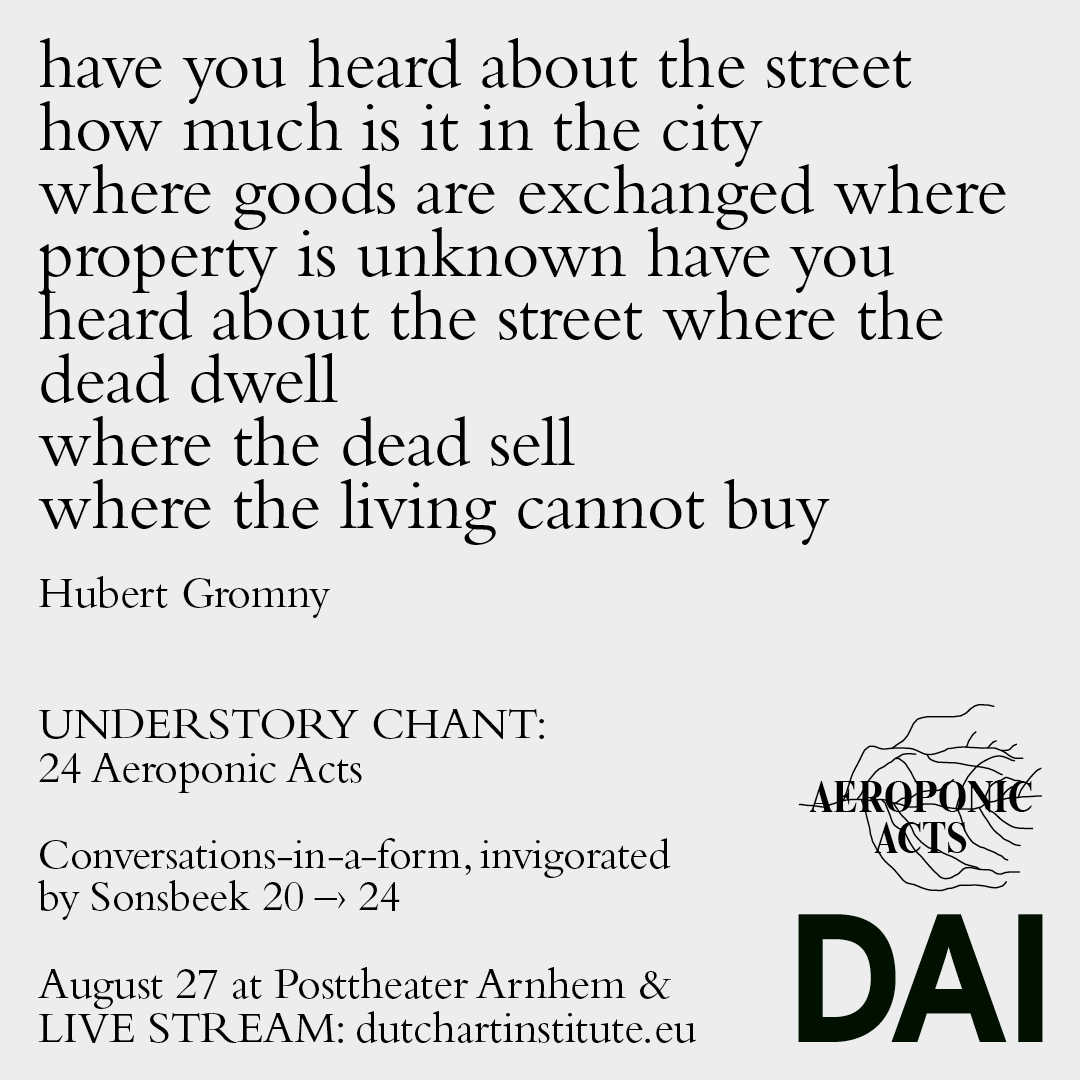Hubert Gromny: have you heard about the street
‘Aeroponic’ – root systems nourished by air – Acts is the name given to the nomadic Dutch Art Institute’s final Kitchen presentations. Each participant addresses one question, as a practice of engagement.
Here you will find the documentation of Hubert Gromy's presentation as filmed by Baha Görkem Yalım. The written report is by Harun Morisson and it includes a summary of the comments by esteemed guest respondents.
have you heard about the street
Hubert's question:
have you heard about the street
how much is it in the city
where goods are exchanged
where property is unknown
have you heard about the street
where the dead dwell
where the dead sell
where the living cannot buy
Hubert's introduction: The boundaries are sacred, the ownership has a divine status, the society is divided into human citizen-proprietors and non-human subjects of the state. These are characteristics of antiquity where European modernity seeks its origins. The property is Western eschatology. In my presentation I will show images made in Rotterdam of the area of Afrikanderplein market and De la Reystraat.
Harun's report: Have you heard about the street? . . . ‘Where the dead dwell. Where the dead sell. Where the living cannot buy.’ The sinister and tragic refrain speaks of a vicious Capitalist entanglement that ensnares the metaphorical and living dead. The text accompanies a successive series of photographs of urban space in and around Rotterdam focusing on De la Reystraat. Sometimes with people, sometimes without. It’s the lens of someone new to the city, familiarising themselves, while negotiating an alienation from that same environment. At the same time comparisons are drawn between spatial and economic relations that are repeated across multiple geographies such as the housing market, questions of real estate and the informality of the open air market. The urban melancholia is painfully familiar. “It had been a golden evening in Rotterdam, when I heard the sound of drums.”
Barby Asante: We have our own touristic tendencies, to document things through the lens of the camera. Rotterdam is also known as a gateway city, where people float through. How do you position yourself in such places? I like the way you made us look at the mundane. The extended look at the photographs. Staying with the image for much longer than most of us were comfortable with. I also want to return to this binary of the dead and living. . . And think about cities as living entities even when memories are erased. Who’s the living and who’s the dead?
Momtaza Mehri: I was intrigued by the boundary between the dead and the living. Haunted by the dead in so many ways. For me there is a part of London that is traumatic because so many of the terrible events in one’s life are revisited every time you encounter the streets where they occurred. I appreciate that your presentation didn’t operate as an intellectual exercise in Debordian psychogeography. We should also recognise public space and the street as a febrile centre of many anxieties. I think about the topical concern of street violence, despite a lot of violence being experienced in the domestic sphere. A lot of ringing off and encircling. There is contestation – who owns the streets, who can reclaim the streets? What if you had a different kind of guide? What if your tour was led by the dead. Or by one of the non-human subjects you describe?
Lisette Lagnado: Coming here from the hotel we crossed the market. I took from you the consumer city - has redefined the living city. Your ironic critique drove to me George Bataille, the notion of the expanse, the notion of throwing up or leaking. Bataille published a drawing by André Masson of a headless man holding a burning heart and dagger in each hand for the cover of Acéphale. I could not tell when the photos were taken, if they were taken during the pandemic. Even our gaze is contaminated now. Your presentation escaped some pitfalls, like formalist black and white pictures. You gave your skin and flesh to these discarded images. What does it mean to recognise the-acceleration of the consumer society, rather than looking at an empty street as a dead street?
Hubert Gromny's "have you heard about the street" was presented before live audience at the Posttheater in Arnhem on August 26th.
Find the overview of all 24 AEROPONIC ACTS 2021 here: UNDERSTORY CHANT

